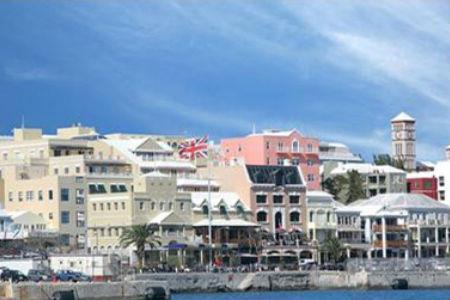Global Reinsurance interviews stock exchange chief

How big a role has the Bermuda Stock Exchange (BSX) played in the boom of ILS?
We have about 142 listed ILS vehicles right now on the BSX, they’re about $17.8bn, which equates to about of the total markets right now being quoted to be $24bn, and we’ve got 70% of the global issuances listed on the exchange. They’re coming from all over, they’re not just Bermudian companies, they’re Irish, and they are from other places as well. We saw that as a real opportunity because Bermuda is the third largest reinsurance industry in the world, it’s been operating in this space for decades. Bermuda insurers have been servicing global clients for many many years, and because of its, the infrastructure that’s developed in the country and the base level of experience there, Bermuda has become very effective in being a driver of innovation for new products.
In 2008 things changed, we started to watch the kind of structural changes happening in the market, including how capital flowed into the market. Capital was flowing into vehicles that were providing risk transfer for insurance companies – it was intuitive for us that in order for the market to continue to drive and create and innovate, capital markets would have to become involved as well.
The investment side of the market like the investment profile of ILS as a risk diversifier, and there is a lot more comfort in global capital markets. While those actually involved in creating and driving the product are looking at ways to continue to thrive they’re business, we as infrastructure providers are looking at ways to bring further support – and investors.
Why has ILS had such an impact on the (re)insurance market?
I think there are some exciting dynamics in the market where you do have investor appetite, and you do have the fuel to actually drive the industry to look at other ways to create innovation, and when I say innovation it’s basically diversifying risk.
In the broader capital market, investors were making their yields and they were quite happy, they didn’t have to take extra time to understand what risk transfer is and what cover and triggers are. But the global financial crisis really shifted the landscape, and I think that really give the impetus to the capital market looking for additional ways to invest their money, and ILS was a great answer to that. They’re very low correlation to the broader capital markets, and they’re a wonderful hedge from a portfolio management perspective. It was at the cost of the global financial crisis, but it created a new environment and since then we’ve just watched innovation start to take hold.
Has ILS shaken off its disruptor mantle and is it now being seen as part of the landscape?
When we first started this, the question was is this cannibalistic or is it complementary, and the jury was out. Some were saying it was not good, because right away it was the unknown, it was scary, and it has done exactly what many felt it was going to do. But the current situation in the market isn’t happening just because of third party capital coming in – there are a variety of factors contributing to the state of the market, third party capital is only one. What has changed is now there is an acceptance that it’s here to stay, a true acceptance that ILS is going to slowly coexist with traditional reinsurance – so much so that you see competing jurisdictions. One of our biggest competitor announcements was London saying it needs to be involved in ILS.
How does the London Announcement add to the validity of ILS?
When Lloyd’s, such a staid and respected organisation, realises that we need to somehow develop a strategy here, you know that does say something. It says that structurally there is an evolution happening in the market. Evolution is awesome for markets, because it does provide innovation, it is somewhat disruptive, but in this case it has the opportunity to actually drive very important development for countries that are developing. This innovation will force traditional structures to look beyond the traditional model. Right now, from our experience at the BSX, of the 142 listed items, they’re very heavily weighted in US property catastrophe, largely wind and largely quake – but that’s just because there’s huge losses there and it’s easy due to the infrastructure to quantify losses as they happen. But when you look at what the investment market wants, they want more profit, they want to invest in more products. The demand is out there, it’s just the supply is not.
Where next for ILS and the BSX?
I think the market dynamics are right for growth. It’s not going to happen overnight, there is structural work that has to happen. Right now, 7 of the world’s mega-cities are in the Asia region, and they’re really under-covered. So there’s work that has to be done to bring these countries in line.
We recently did our first Chinese deal: the China reinsurance listed Panda Re has started to recognise that at least in this instance ILS could work for them. But there are structural things that everybody’s going to have to work on to make the products flow a little bit more. We at BSX sit in a very comfortable position where that’s starting to happen.







No comments yet